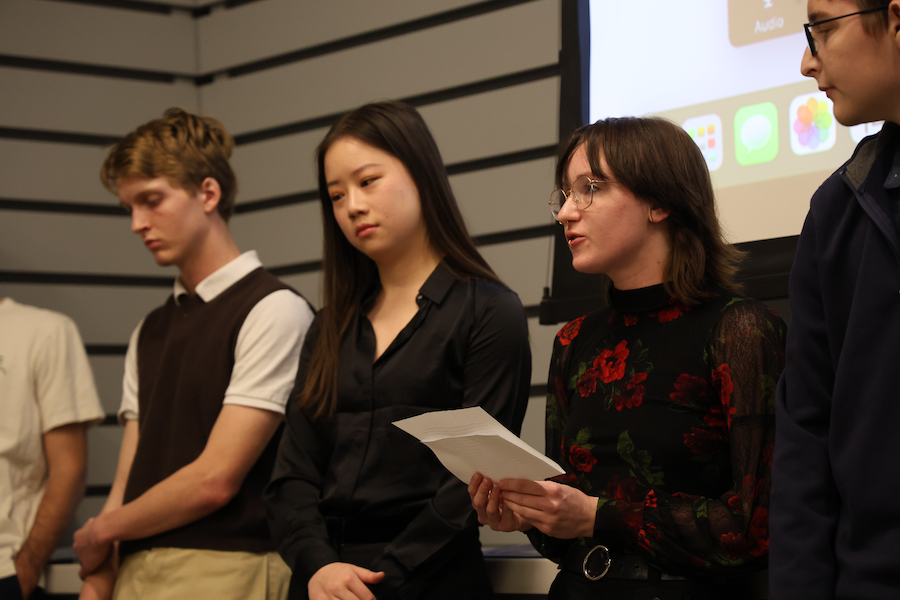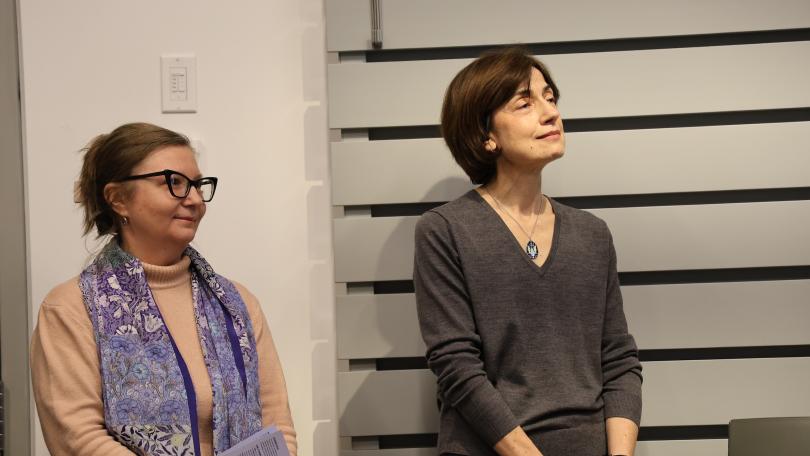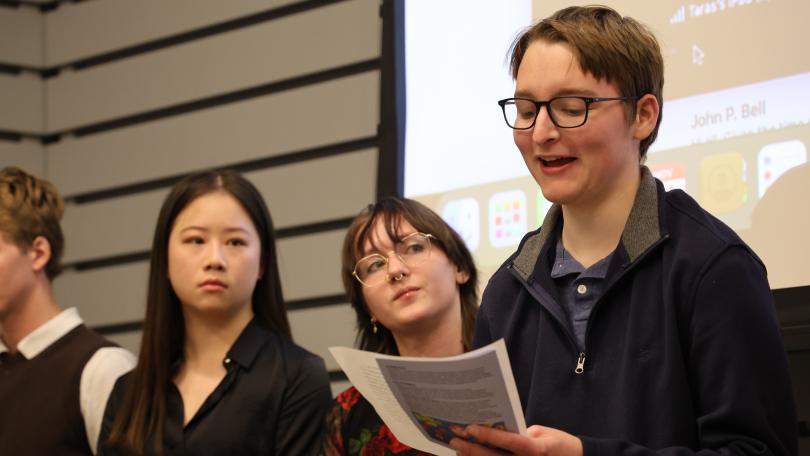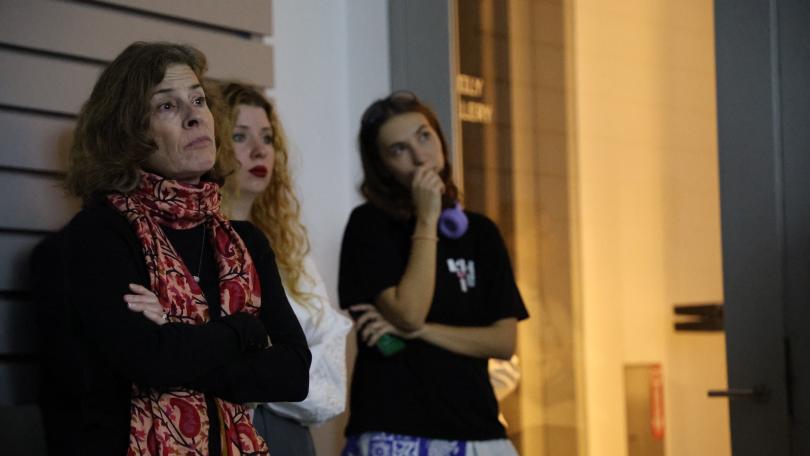
from left Marshall Carey-Matthews '27, Sheba Duan '27, Annabelle Pietryka '26, and Jacob Bowen-Glazeroff '28
Building a Memorial Museum to Document Destroyed Artifacts
More than 1,000 days into Russia’s full-scale invasion of Ukraine, resistance to the war still buzzes across Dartmouth. Spearheading these efforts are two Ukrainian professors, Victoria Somoff, associate professor in the recently renamed East European, Eurasian, and Russian Studies department, and Lada Kolomiyets, visiting professor, at Dartmouth.
Last year, in addition to their regular course load, the two introduced a Ukrainian language sequence, a Dartmouth first. To Victoria and Lada, teaching the language is an act of resistance. Lada notes the importance of the language “in the context of the information war,” so that students can obtain “direct and comprehensive access to information about Ukraine and from Ukraine.” Victoria notes the more symbolic reasons for learning Ukrainian.


